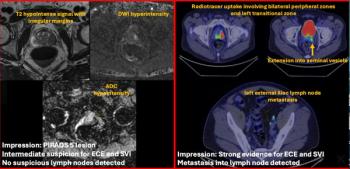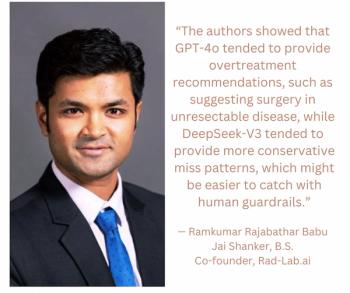
Report from MDCT: Goodbye abdominal x-rays, hello ultralow-dose MSCT
Multislice CT is likely to take over and replace abdominal plain films if the CT dose can be reduced to a very low level. New research indicates that this is achievable, German radiologists reported June 15 at the 8th Annual International Symposium on Multidetector-Row CT in San Francisco.
Multislice CT is likely to take over and replace abdominal plain films if the CT dose can be reduced to a very low level. New research indicates that this is achievable, German radiologists reported June 15 at the 8th Annual International Symposium on Multidetector-Row CT in San Francisco.
In a study of 498 patients with abdominal pain, a dose equivalent to an abdominal x-ray was used effectively on 16- and 64-slice CT, said Dr. Patrik Rogalla, head of CT at Charité Hospital in Berlin.
CT offers more information about the abdomen than does plain film, but standard CT radiation dose has been deemed too high, said Rogalla during a session he nicknamed "Goodbye, abdominal x-ray."
CT accounts for 6% of all imaging exams but contributes 40.6% of the annual collective radiation exposure in Western countries, according to a 2000 report from the United Nations Scientific Committee on the effects of radiation. Rogalla pointed out that the advent of MSCT has increased radiation exposure relative to single-slice CT.
A conventional abdominal plain film results in exposure to 0.5 to 0.9 mSv per x-ray. More complex studies that involve a number of films, such as the excretory urogram, deliver from 1.33 mSv to 1.5 mSv. A standard CT dose for abdominal CT is significantly higher at 12 mSv to 16 mSv.
Using commercially available software, researchers set MSCT scanner parameters to deliver a dose comparable to that of plain film - about 0.5 mSv. They omitted the scanogram and used settings of 5 to 7 mAs at 120 kV. No IV contrast was used.
Not surprisingly, the CT scans done at ultralow dose resulted in significantly noisier images.
"Noise destroys the image," Rogalla said.
But there was a solution. Using maximum intensity projection, researchers were able to suppress image noise and enhance pathology on the ultralow-dose studies, Rogalla said. He presented case studies, including renal stones and a perforated sigmoid colon.
"At Charit, as CT slowly replaces abdominal radiography, we can say, 'Goodbye abdominal x-ray'," Rogalla said.
In the same session, another presenter from Germany said that a novel 3D noise reduction filter is proving useful in improving image quality of CT liver scans performed at lower doses. With simple filters, it can be difficult to differentiate between important and unimportant structures, said Dr. Roman Fishbach, an associate professor at the University of Muenster.
"These filters do a good job of reducing noise, but conspicuity suffers from the application of the filter," he said.
The new developmental 3D filter recognizes and respects contrast or density differences between linear anatomic structures, resulting in better conspicuity of liver lesions despite significantly reduced tube current and radiation dose.
Researchers at the University of Muenster put the filter to the test in a study of 18 patients and 25 liver lesions. Tube current reduction was simulated at various levels, and the resulting images were assessed for noise reduction and diagnostic quality.
With the 3D filter, detail was maintained, despite the reduction in tube current and dose. In fact, the images done with the filter were better than those done with a standard radiation dose and conventional technique, Fishbach said.
"Quality was not only maintained but improved. The filter could lead to a significant reduction in CT-related radiation dose," he said. "We need to repeat this study in a larger series."
For more online information, visit Diagnostic Imaging's
Newsletter
Stay at the forefront of radiology with the Diagnostic Imaging newsletter, delivering the latest news, clinical insights, and imaging advancements for today’s radiologists.




























